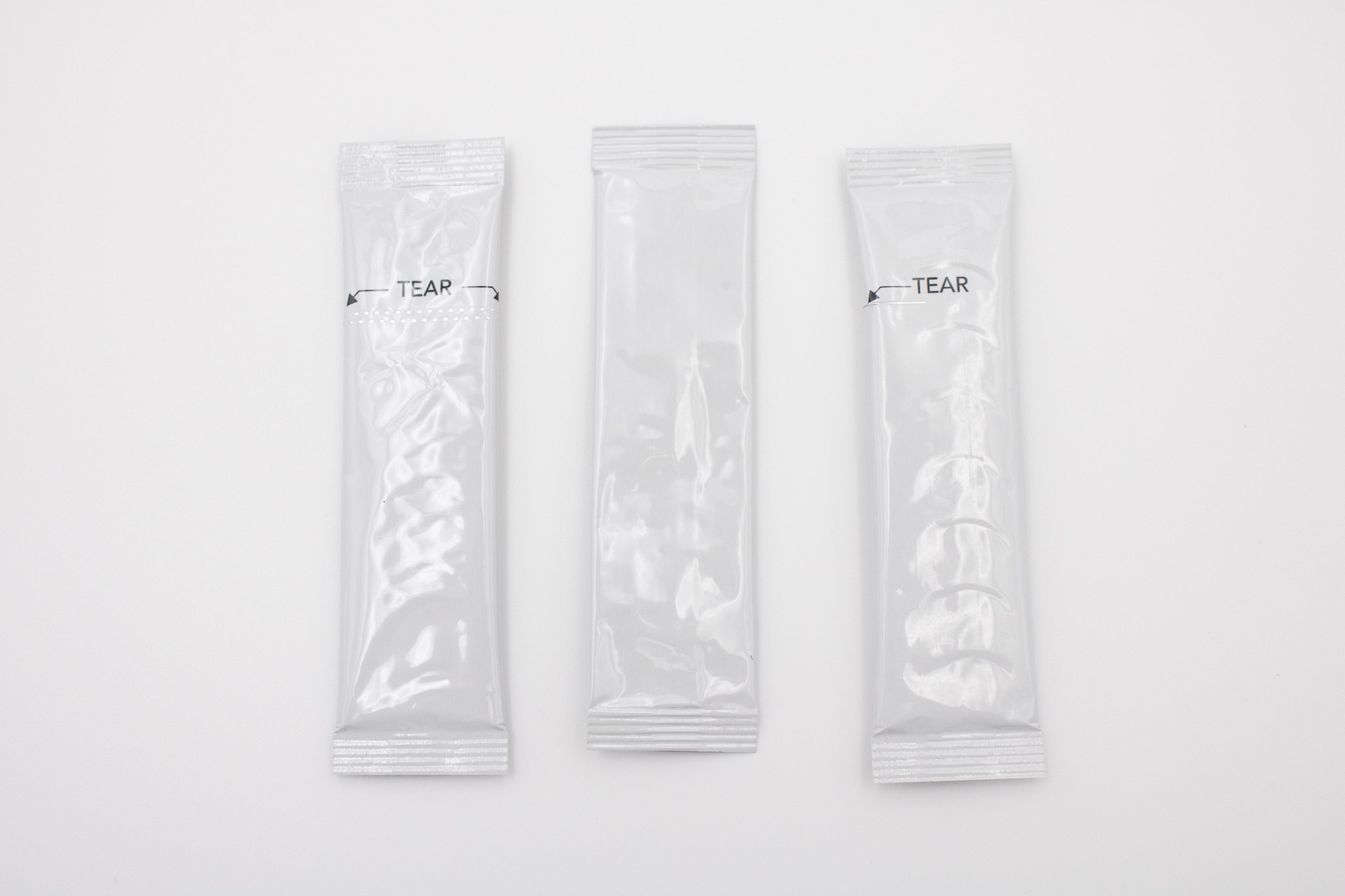Dose Packaging
• Industry Trends
• Oliver Design
Top 5 Stick-Pack Benefits
September 19, 2022
Today, stick packs are garnering more attention than ever in many applications, including the pharmaceutical sector. Stick pack science is now reliably delivering all formulation mediums, including liquids, powders, and gels. The increased ease of consumption that comes with those production capabilities mean good things for pediatric and geriatric markets. Emerging packaging security, child-resistance and senior-friendly opening options are also fueling momentum. If your company hasn’t yet explored or engaged with stick packs, the benefits are worth checking out.
- CUSTOMIZABLE AND CONVENIENT
The stick pack pouch offers portability and broad fill-content compatibility, ideal for many oral medications and topicals. Sizing of stick packs can be widely customized to accommodate the net weight, delivery form and dosage of the contents. - LOW WASTE AND LOWER MATERIAL USE
Stick pack pouches come to the table with eco-friendly aspects. Depending on the product specs, material reductions range from 10% to 45% less material over standard rectangular sachets. By their very nature, stick packs look to find the smallest size possible to adequately protect the contents. - COST EFFECTIVE
In addition to materials cost savings, stick packaging also scores well for automated manufacturing throughput. Production runs can maintain reliability and consistency of production quality, for added value and lower cost at the manufacturing facility. - DELIVER KEY FEATURES AND BENEFITS
Stick pack pouches provide space for simple, patient facing IFU, branding, or other labeling. Stick packs also provide excellent barrier properties, as well as effective protection of contents from moisture and contamination. And, their portability is unsurpassed. - DOSAGE, USE AND QUALITY CONTROL
For patients requiring “other” caregivers, such as day care or rotating support, stick pack medications ensure exact dosing and confirmation of use for trackable patient safety. The single dose/use of stick packs also protect from contamination to contents through multidose packaging that require opening and human touch each use. With no “scoops” or measuring spoons, patients also receive precisely the right amount, every time.
In closing, at this industry juncture, there are few downsides and even fewer limitations to the contribution that stick packaging is bringing to the healthcare sector.
